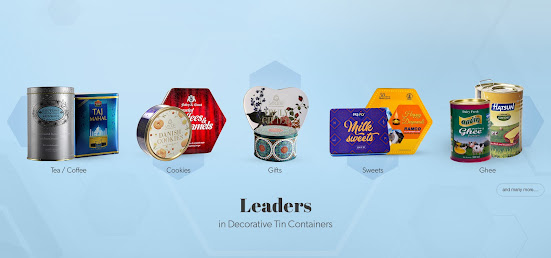Why Leading Chocolate Tins Manufacturers Are Shaping the Future of Sustainable Packaging in 2025
Introduction
In 2025, sustainability has moved from a marketing buzzword to a manufacturing necessity. Across the globe, brands are rethinking how products are packaged, transported, and displayed. Among the most innovative shifts stands the rise of Chocolate Tins Manufacturers, who are redefining the packaging landscape with materials that last longer, waste less, and tell a more responsible brand story.
These manufacturers are not only addressing environmental concerns but also helping brands elevate their value through design, durability, and safety. Tin packaging, once seen as traditional, has now become the emblem of modern sustainability.
The Evolving Landscape of Chocolate Packaging
Today’s consumers are conscious of the impact their choices make on the environment. They prefer products that feel authentic, responsible, and worth their trust. For chocolate brands, packaging is more than just protection; it is a reflection of values.
-
Sustainability and shelf life: Tin packaging keeps chocolates safe from humidity, bacteria, and UV rays, ensuring longer freshness without added preservatives.
-
Recyclability and reuse: Tin can be recycled infinitely without losing its quality, making it a circular packaging choice.
-
Aesthetic value: Premium tins add charm to gifting and help brands stand out in crowded retail spaces.
By choosing Chocolate Tins Manufacturers, brands gain more than packaging — they gain a sustainable partner in shaping the future of responsible consumption.
Why Tin Plate Packaging Leads the Sustainable Shift
Tin plate has proven to be one of the most reliable and eco-friendly materials for packaging, especially in the food and confectionery sectors. Unlike plastic, which degrades over time, tin maintains its structure and purity even after multiple recycling cycles.
Key Advantages of Tin Packaging
-
Extended Product Protection:
Tin containers act as a strong barrier against moisture, oxygen, and light, ensuring chocolates stay fresh and flavourful for longer periods. -
Non-Toxic and Food-Safe:
Every tin is crafted to meet global safety standards, ensuring it remains a non-reactive and hygienic choice for food-grade packaging. -
Aesthetic Branding Opportunities:
Excellent printability and embossing options allow brands to personalise designs while keeping sustainability at the forefront. -
Durable and Recyclable:
Unlike disposable packaging, tins have a long life and are easily recyclable without losing structural integrity. -
Eco-Responsibility:
Tin plate supports a closed-loop recycling system, reducing the overall carbon footprint of production and disposal.
These qualities make tin packaging a natural ally for brands aiming to balance luxury appeal with environmental accountability.
The Role of Chocolate Tins Manufacturers in a Sustainable Economy
Modern Chocolate Tins Manufacturers are not just producers but innovators driving the sustainability agenda forward. They combine technology, material science, and design to meet the evolving demands of global brands.
Their factories increasingly use energy-efficient machinery, water recycling systems, and low-emission coating technologies. Through responsible sourcing of tin plate and eco-friendly printing inks, they reduce the environmental burden at every production stage.
Furthermore, by offering reusable and refillable tin solutions, they help brands build long-term relationships with consumers — extending product life and minimising waste.
What Makes Tin Packaging a Responsible Brand Choice
As brands worldwide pledge to reduce plastic usage and embrace circular design, tin packaging stands out as a responsible and future-ready choice.
Tin Packaging Offers:
-
Recyclability without quality loss — can be reused repeatedly without compromise.
-
Premium presentation — enhancing shelf appeal for chocolates and confectionery.
-
Safety and compliance — meeting food-grade standards globally.
-
Reduced environmental impact — fewer emissions, less waste.
-
Consumer trust — reinforcing a brand’s ethical and sustainable image.
Choosing a reliable Chocolate Tins Manufacturer ensures that sustainability goals translate into tangible packaging results that look good, perform well, and leave a lighter environmental footprint.
The Future Outlook: Innovation Meets Responsibility
The future of sustainable packaging lies in merging beauty with responsibility. In 2025, the industry sees rapid adoption of digital printing, smart labelling, and lightweight tin designs to reduce transport emissions.
Brands are also experimenting with limited-edition collectible tins, encouraging reuse and emotional connection between product and consumer. As global awareness of environmental impact deepens, Chocolate Tins Manufacturers are becoming central to brand narratives built on trust, creativity, and care.
Conclusion
In the evolving world of sustainable packaging, tin continues to shine as the metal of choice for forward-thinking chocolate brands. The combination of elegance, functionality, and eco-efficiency positions it far ahead of single-use alternatives.
Nikita Containers, founded in 1993 in Umbergaon, Gujarat, has grown from a small aluminium tube manufacturer to a global supplier of high-quality metal containers, catering to diverse industries including food, confectionery, cosmetics, and custom packaging. With eco-friendly, recyclable tin plate solutions offering durability, safety, and premium appeal, the company continues to uphold its mission of delivering excellence, trust, and innovation while contributing to sustainable packaging worldwide.
FAQs:
Q1. Why are Chocolate Tins Manufacturers crucial for sustainability in 2025?
Because they produce recyclable, reusable, and durable tin packaging that reduces waste and supports circular economy goals.
Q2. Are tin containers safe for storing chocolates and confectionery?
Yes. Tin containers are non-toxic, food-safe, and protect against moisture, light, and contamination.
Q3. How do tin plates compare to plastic in terms of eco-friendliness?
Tin plates can be recycled infinitely without losing quality, whereas plastic degrades after limited cycles.
Q4. Do consumers prefer metal tins over other packaging types?
Yes. Reusable metal tins offer a premium, sustainable, and collectible experience that modern consumers appreciate.
Q5. Can tin packaging be customised for branding and design?
Absolutely. Tin provides an excellent surface for printing, embossing, and custom finishes that enhance brand recognition.
.jpg)


Comments
Post a Comment